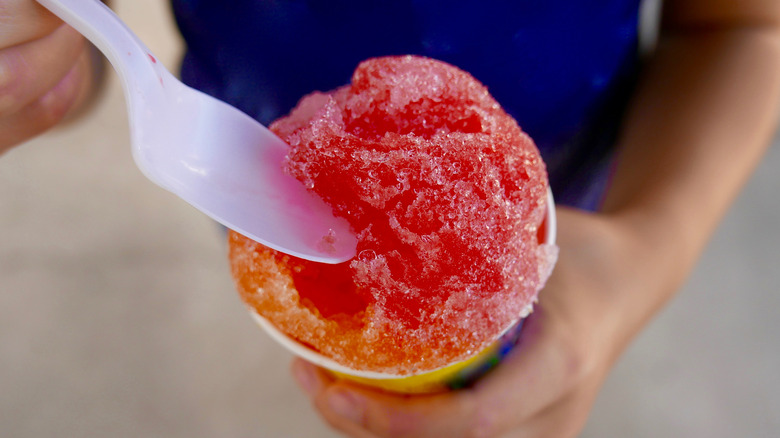Why Cherry-Flavored Treats Often Don't Taste Like Real Cherries
Cherry popsicles, cherry soda, and cherry suckers have a few things in common: they are a brilliant red, are sweet, and they don't taste like natural, fresh cherries. But that hasn't stopped generations of Americans from loving cherry-flavored food items. However, a person has got to wonder why don't these cherry-flavored treats, like ice cream, taste more like the real deal?
A variety of flavors have been developed by scientists for years, going back as far as the mid-1800s, artificial flavor expert Nadia Berenstein told Science Friday. She said that while nowadays scientists are able to create a flavor that more closely resembles the taste of the real fruit, people still love the more synthetic version, which she referred to as "heritage or heirloom artificial flavors."
Flavor, according to the Flavor Extract Manufacturers Association (FEMA), defines all of the sensations that people experience when eating or drinking. In modern times, artificial flavors are developed by people who are trained in the field and must complete a seven-year apprenticeship before they are certified by the Society of Flavor Chemists and known as flavorists or flavor chemists, according to Harvard University. This has led to more realistic cherry flavorings though people still love their traditionally-flavored cherry candy and food items.
A cherry-picked flavor
The process to create flavors in the mid-19th century was a lot more limited, Berenstein said in the interview. Thus cherry, grape, and orange food items didn't taste like the fruits. In the early days of artificial flavor development, Berenstein said that flavors weren't created based an analysis of fruits, but that people took carbon-containing chemicals to make synthetic flavors.
To create a compound that was called cherry, Berenstein said that early creators used esters, which is made from alcohol distillation byproducts or chemicals that were byproducts of the coal industry. From there, the creators would combine the byproducts in different ways to create fruit flavors, she said.
If the "fake" cherry flavoring just doesn't cut it for you and your tastebuds, scientists have been working on a more natural flavor and have been focused on the compound called benzaldehyde, which is found in cherry, almond, and raspberry flavorings, according to Purdue University. Benzaldehyde, said Natalia Dudareva, professor of biochemistry in Purdue's College of Agriculture, provides a scent similar to almond. That scent, she said, is found in fruits and other plants, such as the petunia. By linking benzaldehyde to the petunia flower, Purdue University is further exploring how flavorings could be made in the future.
In the meantime, enjoy that refreshing, bold red popsicle or quench your thirst with a fizzy, ultra red cherry soda.

